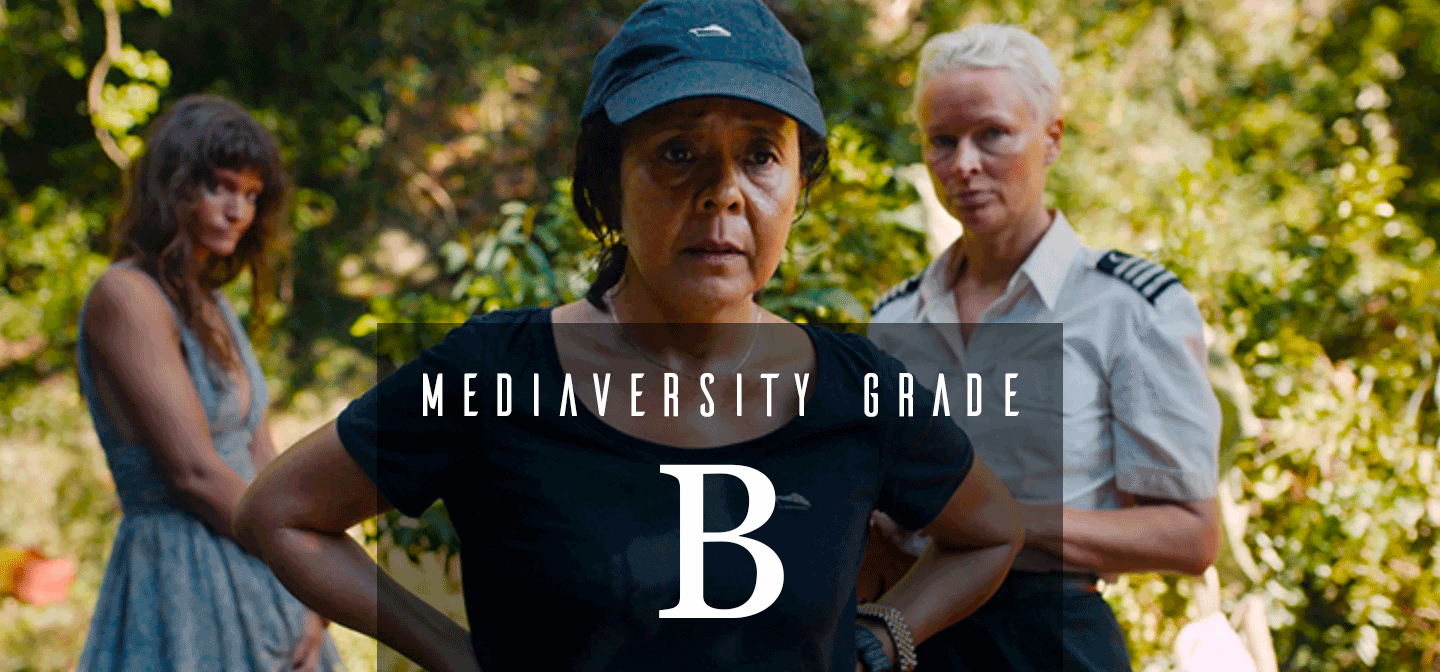Triangle of Sadness
“For a film that gleefully takes down those in power, Triangle of Sadness’ reliance on disability tropes feels like an incongruous misfire.”
Title: Triangle of Sadness (2022)
Director: Ruben Östlund 👨🏼🇸🇪
Writer: Ruben Östlund 👨🏼🇸🇪
Reviewed by Li 👩🏻🇺🇸
—SPOILERS AHEAD—
Technical: 4.75/5
Tell me if you’ve heard this one before: A group of outrageously wealthy characters get lampooned by a knowing narrative. Familiar, right? Now add the escapism of tropical vacations and conspicuous consumption, and you get what could be considered a trend—one that neatly pairs cabin fever with schadenfreude. HBO’s The White Lotus, the Knives Out films, and Acapulco on Apple TV+ all come to mind.
Ruben Östlund’s Triangle of Sadness neatly slots into this group. Taking place onboard a luxury cruise liner and later, a lush island, Russian fertilizer kings rub elbows with British war profiteers and fashion influencers. These caricatures suffer not just ribbing, or even ridicule—no, what sets this film apart is how far it’s willing to go to deliver its message of “eat the rich.” Think onscreen torture via projectile vomit and sewage; think perfectly coiffed characters maimed and thrown overboard by a Biblical storm. Östlund confidently stretches these wince-inducing gags for long, interminable moments that begin with chuckles, take the scenic route through boredom, then double back for belly-deep laughter—at least for the viewers who vibe with the Swedish director’s farcical sense of humor.
I mention this caveat because Triangle of Sadness cleaves audiences with its excess-driven filmmaking. Take the third act, for example. Many critics consider the crash onto a deserted island the point where things fall apart, but that messiness is precisely why I loved this film. Not unlike the increasing hysteria of The Good Fight’s opening sequence, which progresses from stately elevator music to screaming sopranos in the span of minutes, it feels just as cathartic to watch a cleaner (Abigail, played triumphantly by Dolly de Leon) flip the power dynamics and rule the roost. So many movies are content to simply wag their fingers at rich people, but Triangle of Sadness actually follows through by having Abigail dominate the screen as a physically slight but tough-as-nails Filipina. I relished her power in all its coercive, unsettling breadth.
Gender: 4.5/5
Does it pass the Bechdel Test? YES
Triangle of Sadness may be written and directed by a man, but Östlund successfully adds three-dimensional women into positions of power. Ship manager Paula (Vicki Berlin) begins as our optimistic and competent protagonist, someone we can commiserate with as she corrals impossible-to-please guests and a drunkard of a captain (Woody Harrelson). But when power transfers from those with money into the hands of those with concrete survival skills, we watch Paula scrabble for balance as her former employee, Abigail, takes control.
Speaking of Abigail, she (and De Leon’s performance of her) may be the best thing to come out of the entire film. Unlike the usual female-led revenge thriller, and with it the genre’s overreliance on depressing backstories of rape and trauma (which usually still fixate on men), Abigail appears to us as a blank slate. She’s an allegory for what any of us would do in her shoes. If you could exert power over your tormentors, wouldn’t you rule them with an iron fist too?
Finally, it’s true that some female characters do feel tropey, such as social media mavens Yaya (Charlbi Dean) and Ludmilla (Carolina Gynning). But Östlund generally succeeds at satirizing their wealth and status rather than leaning on sexist assumptions. In particular, Yaya demonstrates cunning and independence throughout the film.
Race: 3.75/5
As mentioned, Abigail is played by Filipina De Leon. The script gives her a fun story arc as a character who begins as part of the exploited class before becoming an exploiter herself. In a smaller role, French actor Jean-Christophe Folly, who is Black, joins the party of marooned islanders. He doesn’t see much of a plot but does develop easy friendships with characters like fashion model Carl (Harris Dickinson) or German cruise guest Therese (Iris Berben). Outside of these two, however, the cast remains mostly white.
Deduction for Disability: -0.75
Therese doesn’t have a major role, but as the only visibly disabled character it’s impossible not to notice how she falls into cliches. For starters, her speech impediment is used for humor. She can only say one line—“in den Wolken,” or “in the clouds”—due to a stroke that also left her paralyzed from the waist down. At first, she uses a wheelchair to get around but once all hell breaks loose and the mobility aid is lost to the sea, Therese is suddenly treated as an invalid by the script. Unable to walk, she sits in a lifeboat as other characters procure food and warmth for her. And when she’s handed the opportunity to have someone rescue the shipwrecked group, she fails to communicate with their potential savior. For a film that gleefully takes down those in power, Östlund’s equation of disability with helplessness feels like an incongruous misfire.
Mediaversity Grade: B 4.08/5
Scatalogical humor and farce may not be for everyone, but for viewers who can get into a two-and-a-half-hour dark comedy, Triangle of Sadness is one for the books. If anything, De Leon’s breakout role as a below deck crew member drunk on power should be recognized for the inclusive triumph it is.




